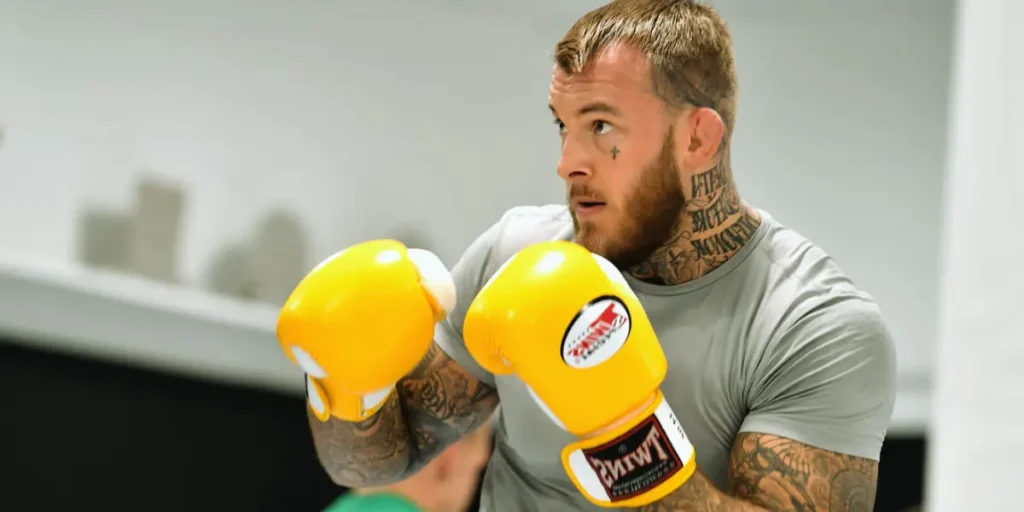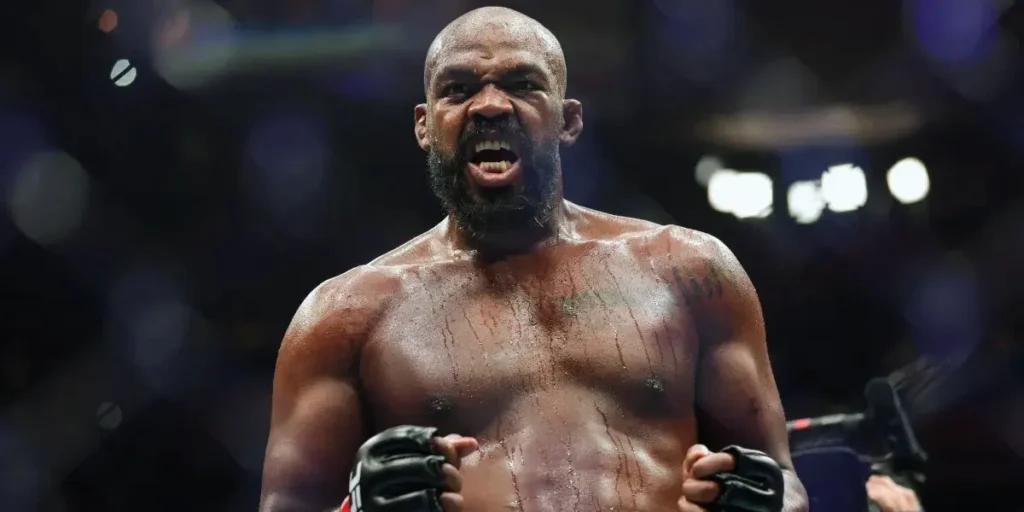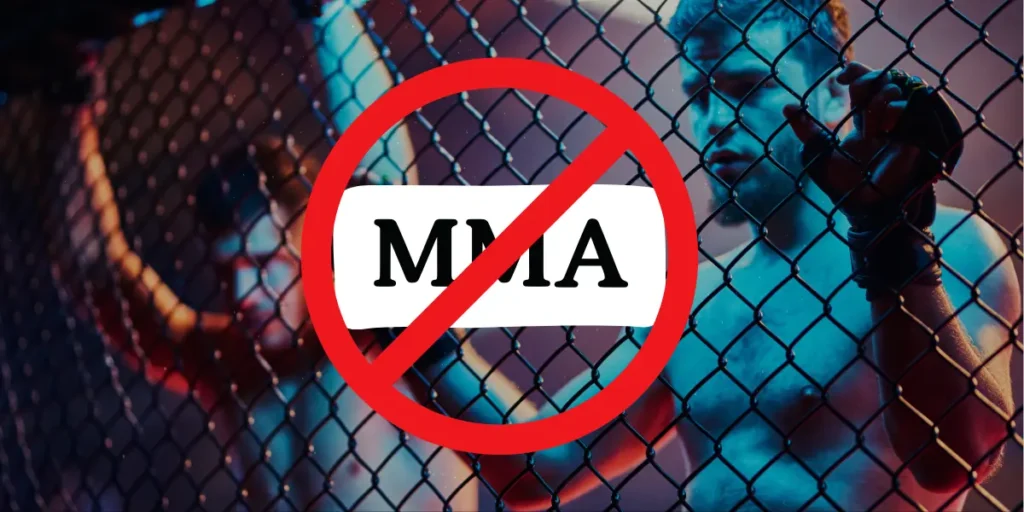If you’re anything like me, the suspense of a MMA fight is hard to beat.
The aura, techniques, and sheer intensity captivate you from the moment the bell rings.
MMA is becoming a world sport because of its openness towards various techniques and fighting culture.
However, despite its worldwide appeal, MMA is still banned in several countries.
While some nations have moved past their initial hesitation, others still prohibit MMA in 2025, because of various cultural, or safety concerns.
So why is MMA illegal in some countries, even today?
In this article, I’ll take you on a journey through the countries that continue to ban MMA and explore how some have changed their stance over the years. Let’s dive into the evolving legal landscape of MMA around the world.
Countries Where MMA is Banned in 2025
As I pointed out earlier, MMA has become an undeniable global force but hasn’t been embraced globally.
Over the years, some countries have banned MMA, often labeling it as too violent or too brutal for their societies.
While many of these bans have been lifted, some countries remain resolute in keeping the sport off-limit for their country.
As of 2025, Two countries think that MMA is too violent for them, Those are:
- Afghanistan
- Norway.
Afghanistan
When I first read that MMA was officially banned in Afghanistan, I was shocked. UFC has been dominated by the fighters who are originally from mountainous areas.
Afghanistan would have provided so many quality players for the world!
As of August 2024. Under the Taliban’s rule, the government claimed the sport contradicted Sharia law, which prohibits activities that are seen as too violent or incompatible with Islamic teachings.
This decision hit especially hard because I know how much MMA had taken off in Afghanistan before the ban.
MMA first caught the attention of Afghans after UFC 1 in 1993. Over the years, the sport gained significant popularity, and by 2008, Afghanistan established its first official Mixed Martial Arts Association.
From 2015 to 2019, the Afghanisthan MMA Association organized two events, the Snow Leopard Fighting Championship and the Afghanistan Fighting Championship, and both became an instant hit for audiences and players.
But everything changed when the Taliban regained power in 2021.
Atal Mashwani, a spokesman for the General Directorate of Physical Education and Sports, told The Telegraph:
“The free fighting games are banned from now on, and no one is allowed to practice them. Those athletes involved in the sport can move to another sport of their choice and continue their activities.”
It’s sad to think about how Mixed Martial Arts could have become a powerful, positive force in the country, especially considering the hope and excitement it once brought.
But for now, MMA in Afghanistan is on hold, and anyone caught practicing or organizing it faces serious consequences.
Norway

Norway’s relationship with MMA has been a rollercoaster on the other side of the world.
MMA has technically been illegal here since 1981 due to the country’s “Knockout Law” (KO Law), which bans sports that use knockouts as a method of victory.
This law led to the banning of not just MMA but also boxing and other combat sports involving knockouts.
At first glance, it’s easy to think that Norway was against violence in sports, but the law has a much deeper history and context.
It wasn’t until Cecilia Brækhus, an undefeated world champion in boxing, took a stand that Norway began to rethink its stance on combat sports.
By 2016, boxing was officially removed from the red list, and in the years that followed, sports like karate, taekwondo, and kickboxing were also allowed to hold professional events.
But MMA’s journey in Norway has been nothing but a dead end! In 2019, after years of legislative arm-wrestling, the Norwegian MMA Federation (NMMAF) finally achieved a significant breakthrough when the Norwegian Sports Confederation (NIF) granted recognition for amateur MMA.
This was a huge step forward because it allowed MMA to be practiced openly in gyms, which wasn’t impossible.
However, there’s still a long way to go. Professional MMA is not yet legal in Norway.
The regulations are stricter for amateur MMA, with bouts limited to three-minute rounds and no strikes allowed with the elbows or knees.
It’s a far cry from the five-minute rounds and full-contact rules that define professional MMA worldwide.
Apparently, To make MMA legalized in Norway, they only need to find a Cecilia Brækhus for MMA!
Countries where MMA was illegal once
Some countries banned MMA previously and later legalized it.
Some of the most significant moments in MMA’s history come from countries where the sport was once banned—places where passionate fans, fighters, and even whole cultures struggled to bring MMA out of the shadows.
Here are three countries that created a buzz in the media and helped MMA to gain more popularity:
- USA
- France
- Thailand
USA

he USA is essentially the birthplace of modern MMA, so it might be surprising to hear that, for a long time, the sport was banned in many parts of the country.
When the Gracie family introduced the world to MMA through the first UFC event in 1993, the sport wasn’t organized.
Those events aimed to find out who had better martial arts techniques.
It was wild, no-holds-barred fighting—far from the structured, regulated sport we see today.
With time, Americans started liking sports, as did the rest of the world!
However, not everyone was a fan. In 1997, Arizona Senator John McCain led a vocal campaign against MMA, calling it “human cockfighting” and pushing for its ban.
McCain wasn’t the only one—his efforts saw New York, one of the largest and most influential states, adopt the ban.
To counter the legal ban on MMA, MMA promoters started formulating a code on how to conduct games.
After working for years, The promoters finally developed The Unified Rules of MMA in 2000.
They set clear safety standards and provided structure, cleaning up the sport’s image.
AS brand promoters now had a legal code certified by the American Boxing Association; slowly, the states began to lift the ban.
New Jersey was the first state to recognize MMA as a combat sport legally and gave a green signal to hold events and practice in gyms.
The real turning point, though, came in 2016 when New York finally reversed its decision and legalized professional MMA.
France
Here’s a country where MMA was far from welcome despite the growing global demand.
France, known for its rich history in martial arts, once viewed MMA sceptically.
In 2016, France banned MMA after a law was passed that outlawed specific combat techniques—such as elbows, knee strikes to a grounded opponent, and other moves considered too dangerous.
This sudden policy change was a massive setback for the MMA community in France.
But the French didn’t give up easily. The French MMA Federation (CFMMA) led a tireless physical and online campaign to change the law.
And finally, in January 2020, the French government relented. MMA was officially legalized in France, allowing both amateur and professional events to be held throughout the country.
Thailand
Thailand is a place that many consider the heart of combat sports, especially with its deep roots in Muay Thai—a martial art that has shaped the global martial arts scene for centuries.
So when MMA started to gain traction here, it wasn’t surprising that it stirred p many mixed feelings.
Historically, Thailand has been organizing Muay Thai events for a long time, and the local promoters can frown upon the inclusion of another type of sports(Even better, Cause Muay Thai doesn’t have BJJ!).
In 2012, the Sports Authority of Thailand (SAT) dropped a bombshell: MMA was officially banned. The reasoning? MMA’s growing popularity was seen as a threat to Muay Thai’s cultural significance and fanbase.
At the time, Thailand’s sole MMA promotion, DARE Fight Sports, was forced to halt operations. It was a harsh blow to the growing MMA scene.
But the ban wasn’t the end. DARE Fight Sports kept fighting for the legality of the sport, but in 2013, the SAT lifted the restriction, allowing MMA events to resume in Thailand.
Final Thoughts
In Conclusion, Why was MMA banned in many countries? There were two main reasons: Cultural and the absence of a legal framework.
Countries like the USA and France Banned it for its rawness, and with a unified code, the ban was abolished.
However, regarding cultural issues, countries like Afghanistan and Norway are still far from embracing the future of martial arts.


Pingback: The BJJ’s Guillotine Choke: A Complete Guide for Newcomers - Fighters Wisdom-Martial Art Insights